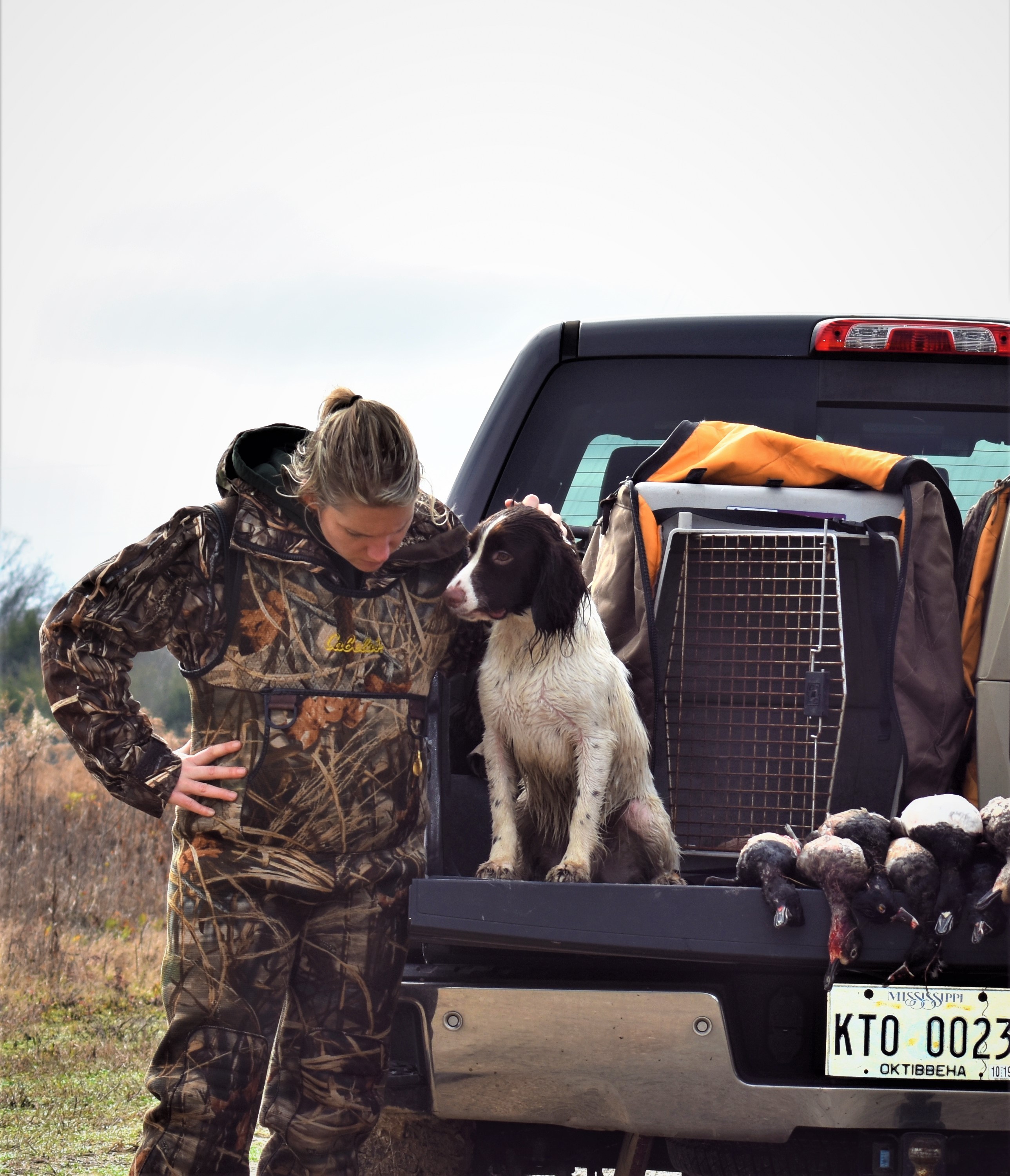Artemis Sportswomen


As sportswomen we often end up using clothing and gear that are hand-me-downs from our male counterparts or men-centric items off the shelf that have been colored pink and marketed to us as ‘specialized’. Sometimes this works. Some women genuinely like pink, and sometimes hand-me-downs fit and are the right price! But other times using gear that doesn’t quite fit can have big consequences in the field. I learned this the hard way a couple of years ago.
I began hunting upland birds and waterfowl very casually in the latter part of high school. After borrowing a shotgun from my then-boyfriend for a while, he decided I should have my own and bought me one as a birthday gift. I loved the idea of owning my very own gun and felt like it made me less of an imposter in the field (that’s a topic requiring its very own blog post). This gun functioned and was special to me simply because it was mine. I shot a few pheasants with it, some geese, and over the next couple of years a handful of ducks.
I began duck hunting seriously when I met my (now) husband and fell hard. For the ducks that is. The first year we hunted together I did OK, but the second year marked the beginning of my absolute worst dry spell ever. I couldn’t hit a bird. I remember one particularly cold and painful morning on a public pond we liked to set up at. The pond itself was always hit or miss, but after arriving way early to beat other hunters and assess the wind, we decided to switch our plan at the last minute and brush in an impromptu blind on the far side of the water. After getting all set up and a little sweaty, the three of us sat in the dark anxiously awaiting shooting light. About 15 minutes early a PILE of gadwall and ringnecks landed right in front of us. They were well within range and having a pool party. To this day I’ve never seen water churn like that from birds. All of our blood pressure rose steadily as the clock ticked on and three minutes before legal light they all decided the other side of the pond was the place to be. We all had a good grumble about the situation and a couple of very uneventful hours, a single ring neck landed out of range and swam into our decoys. This is the part of the story where equipment comes in.
The two people I was hunting with were both aware of my awful streak that season and told me to take the shot. It was close and easy and I was embarrassed that they recognized my need for this offering. I stood up, took about 4 seconds to aim (a long time for those of you that don’t duck hunt), and missed. Big time. Now up to this point, I had tried really hard to end my streak. I mentally visualized myself hitting birds, assessed how far to lead a bird in different situations, worked on my shooting muscle memory, I even played a game involving a flashlight attached to the end of my gun barrel in the living room at night to make sure I was aiming where I meant to be when I pulled up. All of this effort to no avail. Luckily for me, this was also the year we began hunting with our new neighbor Paul.
Paul is short, maybe 5’2, and also addicted to duck hunting. After quietly witnessing a number of my failed attempts at harvesting birds he wondered aloud if maybe my gun was a little too long for me? Surprised, I told him I’d been shooting it for years and had never really questioned if it fit me. It was after all a ‘normal’ shotgun and I was a ‘normal’ person, right? He went on to explain that compared to average men he has pretty short arms and thus shoots a gun with a compact stock. The shorter stock allowed the gun to meet his cheek at a place that allowed him to efficiently line up his sights and not contort himself to see down the barrel. Well, as you might imagine I was eager to blame my problems on equipment failure and jumped at the chance to shoot his gun on our next hunt.
I shot three ducks that next morning and went out and bought the same gun that week. My husband and the rest of our hunting partners were all pretty much ‘average’ sized men and had never thought to question how well my gun fit me. I didn’t know enough at the time to even consider it, and had decided long ago that the way to keep getting invited on hunts was to ‘tough out’ difficult situations. This whole experience was a big lesson for me and I’ve since put a lot of consideration into how the equipment I use functions, and why. If you’re a woman that primarily hunts with men, it may not be intuitive for them or even salespeople at outdoor stores to assess the specific fit between your frame and a piece of equipment. Think about this when you go shopping and more importantly, try to get experience with a wide variety of whatever item you’re using. This will help you to know what is comfortable and productive for you as an individual and could save you a lot of heartache in the field.
Experiences like this one and a desire to build my own prowess in the field are what drew me to my new professional position with the Artemis Program. Artemis seeks to build and engage a community of connected sportswomen that feel confident in the field. In all my memories growing up, I can only remember one woman that ever hunted with us, and she came along with her husband. When I became an adult, most of my hunting opportunities hinged on being invited as an add-on to my boyfriend’s hunts. This sparked quite a few heated discussions between us and I felt like it was incredibly unfair that I didn’t have any hunting ‘buddies’ that were just mine. My role as the Southeast Coordinator for the Artemis program means that I literally get to live my dream. I’ll be working with affiliate organizations and individuals across the Southeastern US to connect sportswomen to each other and bring them to new levels of independence in the field and on the water. The states I’ll be working in, to begin with, are Arkansas, Georgia, Louisiana, Mississippi, Missouri, North Carolina, Oklahoma, and Tennessee. I am so excited to undertake this challenge because of what it means to me personally, and because I know that more women afield equates to a better future for wildlife.
Ashley Chance
Artemis Program – Southeast Coordinator
National Wildlife Federation
If you’d like to know more about the Artemis program or would like to become an Ambassador, connect with us at:
Website artemis.nwf.org
Facebook @ArtemisSportswomen
Instagram @artemis_sportswomen
Podcast Artemis
First photo: The author in the field on a deer hunt.
Second photo: Ashley has a serious discussion with her duck dog, Kyker, after a successful hunt.




